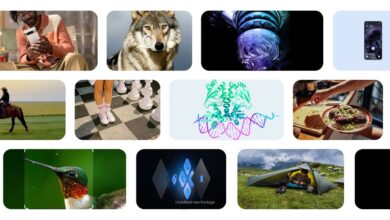HubSpot embraces GenAI with Service Hub updates and more

In recent months, HubSpot soft-launched numerous generative AI features for its Sales, Marketing and Service Hubs. All of them are available today.
The CX platform provider also released a revamped Content Hub, formerly named CMS Hub, which lain dormant for several years. Users can aggregate many types of media on Content Hub, including podcasts, which can be turned into text and broadcast to other digital channels, including members only gated content. GenAI tools can capture a brand’s “voice” and generate copy for different digital channels.
HubSpot Service Hub users will see numerous updates to the Help Desk Workspace, with more data feeds and generative AI to search, organize and filter information. Also included in recent releases are a GenAI chatbot, customer success manager tools with hooks into the CRM, ticket routing tools, workforce management and presence indicators.
Finally, HubSpot broadened its partnership with payments provider Stripe, which avails bank-account payments, and offers users’ customers a choice of localized, device-specific payment methods. Commerce Hub users now also have new invoicing, payment scheduling and subscription tools as well as a deeper QuickBooks integration.
HubSpot built most of its platform itself over the years, partly because it “isn’t super good at acquisitions,” joked Nicholas Holland, HubSpot vice president of product and general manager of its marketing portfolio. Such tight integration from homegrown code has turned into an advantage, because when it comes to adding automation and GenAI features, HubSpot can activate them on all its hubs at once.
“When we improve one thing, it then lights up across the whole platform,” Holland said. “This really gives us an advantage of a really fast innovation cycle now, because everything we do literally raises all of the products at the same time.”
Tailored to HubSpot’s midmarket majority
While HubSpot does have some large enterprise customers, its typical user is a midmarket company of 100 to 1,000 employees. Generative AI will serve that firmographic well, said Liz Miller, analyst at Constellation Research, because they have neither the time nor resources to combine and analyze sales, marketing and service data themselves to properly respond to inbound customer communications and drive revenue. GenAI can automate some of those responses.
“To organizations in HubSpot’s sweet spot — that midsize, mid-position, fast-moving-with-lots-of-moving-parts organizations — inbound [customer communication] looks like just a single track, a single motion,” Miller said. “HubSpot truly understands that it’s actually far more chaotic, especially for midmarket customers.”
Midmarket companies don’t have the operations that their larger counterparts do. Inbound business flows from many different directions, Miller said, and the midsize organization typically doesn’t have centers of excellence to help figure out how to respond to prospective and existing customers to optimize profits and drive the business forward.
“That is the reason you want AI to create those campaigns, and to have automated workflows,” Miller continued. “Midmarket companies want to move faster than a lot of their tools and technologies have been able to move them — because they haven’t been able to connect the data. That’s where HubSpot’s AI is focused, and I think that’s a really smart move.”
Don Fluckinger is a senior news writer for TechTarget Editorial. He covers customer experience, digital experience management and end-user computing. Got a tip? Email him.



